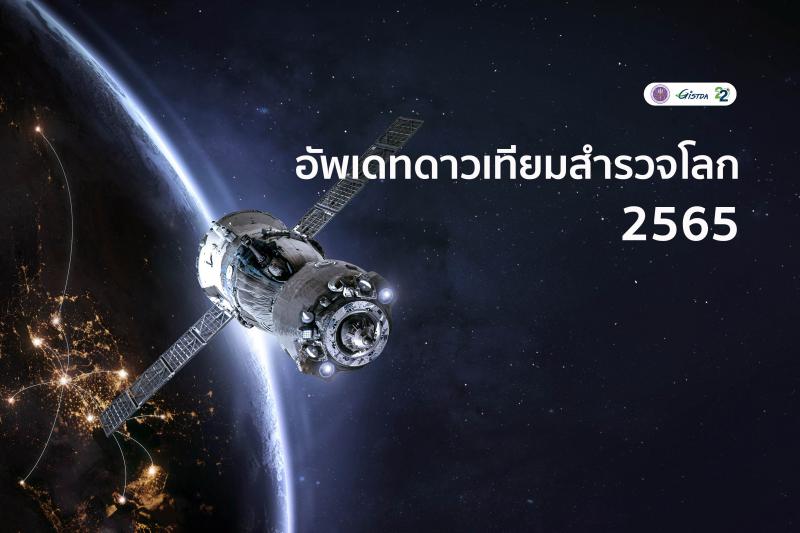Earth observation satellite update 2022
.
Since late 1957, or 2500 BC that humanity has known about launching satellites to the outside world. That time was the launch of the Sputnik 1 and 2 satellites by the USSR within the same year. Later in early 1958, the United States launched Explorer-1 into deep space. Since then, we humans have continuously launched satellites into orbit every year. Until 2020 and 2021, it is estimated that there are approximately 3,291 and 4,877 satellites that actively orbit around the Earth, respectively, with an increasing trend annually.
.
Shifting the focus to earth observation satellites, based on data of the Union of Concerned Scientists (UCS) on 31st December 2021, stated that a total of 1,052 satellites are currently in orbit in space and still functioning normally, an increase of 8.34% from April 2021 when there were 971 observation satellites which are early 10% in only 8 months.
.
1,052 EO satellites, divided by mission or type of sensor, can be divided into
- 426 optical sensor satellites
- 170 meteorological satellites
- 113 electronic intelligence satellites
- 90 radar imaging satellites
- 79 EO satellite (unspecified)
- 75 Earth Science educational satellites
- 41 Hyperspectral or Multispectral satellites
- 19 Automatic Identification System (AIS) satellites
- 17 satellites for other purposes
- 12 infrared imaging satellites
- 10 movie shooting satellites
.
It can be seen clearly that the group of observation satellites includes optical satellites and the ones that are dependent on sunlight to make a screenshot such as Thai Chot satellites, Landsat satellites, Sentinel-2 satellites, etc. accounted for 40%, followed by meteorological satellites at 16%, while radar satellites that are highly useful in flooding area accounted for 8.5%.
.
For agencies that are satellites’ owners, there are a total of 219 agencies from around the world that own the EO satellites in different numbers, which are divided into the following;
• 115 entities that own 1 satellite
• 41 agencies own 2 satellites.
• 12 agencies own 3 satellites.
• 9 agencies own 4 satellites.
The remaining is almost 55% of all EO satellites. Owned by the following groups of entities:
• Planet Labs Inc has 188 satellites
• Spire Global Inc has 119 satellites
• Chinese Ministry of National Defense has 85 satellites
• America's National Reconnaissance Office (NRO) has 44 satellites
• Chang Guang Satellite Technology Co. Ltd. has 29 satellites
• Russia's Ministry of Defense has 21 satellites
• Satellogic S.A. has 20 satellites
• China National Academy of Sciences (CNSAS) has 17 satellites
• Indian Space Research Organization (ISRO) has 17 satellites
• BlackSky Global has 12 satellites
• EUMETSAT (European Organization for the Exploitation of Meteorological Satellites) has 12 satellites
• ICEYE Ltd. has 12 satellites
.
If we look at the owners of each country by reviewing the organization name lists, 70 countries have organizations that own satellites. And it is no surprise that the United States is in the front row for controlling the observation satellite as 43% of all. China is ranked second at 25%. The combined number of US and Chinese satellites accounted for two-thirds of all EO satellites’ inactive states.
.
For countries with more than 10 satellites, they are Americas 451, China 261, Russia 37, Japan 35, India 23, Argentina 22, European Union (multiple countries) 20, France 15, Finland 13, Germany 11, and Taiwan (under cooperation with America) 11 satellites.
.
In terms of the user sector, there are 495 satellites for users from commercial or private sectors, 310 satellites for government agencies, 220 satellites for military users, and 27 satellites for civilian service. However, some satellites can only support multiple groups of users.
.
However, the increase of observation satellites has a tendency to be reduced based on data reference. But there is still growth in hyperspectral, radar, and movie shooting satellites which are expected to be more outstanding in the next year.
.
All of these statistical data confirmed a variety of satellite data that is in today’s service in many countries. It is well known that satellite data is an important thing to support educational research to make understandings about phenomena in the spatial area. It is also important to be used for further innovation development such as online maps, weather forecast applications, agricultural product tracking, etc. Thus, it is no surprise that the developed country will mostly own satellites to develop their country better.
.
For Thailand, with the Development Survey Satellite System Project, or Theos-2. It does not only upgrade the application of geo-informatics technology for domestic development but also makes Thailand have two more satellites for a survey such as one main satellite that is scheduled to be launched into orbit in 2023, and another small satellite that is scheduled to be launched into orbit in the middle of 2022, as well as a team of Thai engineers who have been transferred space knowledge from foreign organizations with expertise to strengthen manpower to support the development of space. This will make Thailand able to continue and develop various projects in space easier in the future.
#GISDAinits22ndyear #GISTDA #GISTDA #Space #Earthobservationsatellite #Satellite #Meteorological satellite #Radar #optical #Theos #Theos #SpaceEngineer
